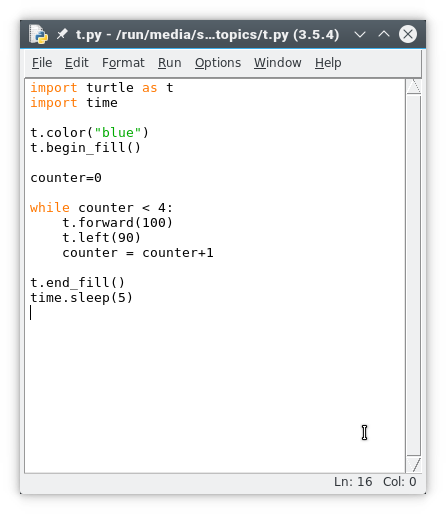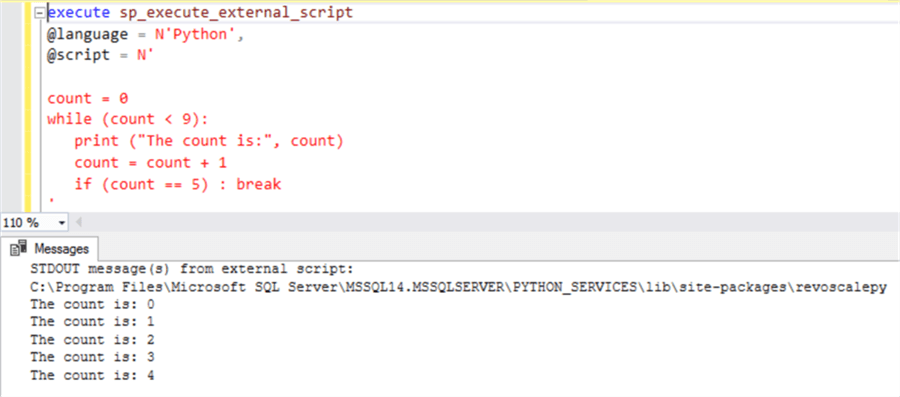
Basic Coding For Python Code Is Compiled
Python is an interpreted programming language. Python source code is compiled to bytecode as a. Pyc file, and this bytecode can be interpreted. There are two modes for using the Python interpreter: Interactive Mode.


I will assume that you areAlready familiar with programming and will, therefore, skip most of theNon-language-specific stuff. Obviously, if you want to really learnA language you need to program in it for a while. It’s probably not so much a tutorialAs it is a cross between a tutorial and a cheatsheet, so it will just show youSome basic concepts to start you off. This tutorial willAttempt to teach you Python in 10 minutes. Preliminary fluffSo, you want to learn the Python programming languageBut can’t find a concise and yet full-featured tutorial. All future updates areFree for people who purchase it.
You don’t have to declare variables), caseSensitive (i.e. Types are enforced), dynamically,Implicitly typed (i.e. PropertiesPython is strongly typed (i.e. Also, pay attention because, due to the tersenessOf this tutorial, some things will be introduced directly in code and onlyWe will focus on Python 3, as that is the version you should use.All the examples in the book are in Python 3, and if anyone advises youTo use 2, they aren’t your friend.
# This swaps the variables in one line(!). The following lines concatenate the two strings.""" > mystring = "Hello" > mystring += " world." > print ( mystring ) Hello world. If you want to knowHow an object works, all you have to do is call help()!Also useful are dir(), which shows you all the object’s methods, and._doc_, which shows you its documentation string:> myvar = 3 > myvar += 2 > myvar 5 > myvar -= 1 > myvar 4 """This is a multiline comment. Getting helpHelp in Python is always available right in the interpreter.
Negative numbers count from theEnd towards the beginning, -1 is the last item. TheIndex of the first item in all array types is 0. Integers, strings, etc in lists/dictionaries/tuples). Hash tables) andTuples are immutable one-dimensional arrays (Python “arrays” can be of any type,So you can mix e.g. Lists are like one-dimensional arrays (but you can also have lists ofOther lists), dictionaries are associative arrays (a.k.a. > myvar , mystring = mystring , myvar Data typesThe data structures available in python are lists, tuples and dictionaries.Sets are available in the sets library (but are built-in in Python 2.5 andLater).
MultilineStrings are enclosed in _triple double (or single) quotes_ (“”“).Python strings are always Unicode, but there is another string typeThat is pure bytes. “He said ’hello’.” is valid). > print ( mylist ) StringsIts strings can use either single or double quotation marks, andYou can have quotation marks of one kind inside a string that usesThe other kind (i.e. # E.g., this will return the first item, then go to the third and # return that (so, items 0 and 2 in 0-indexing).
If number in ( 3 , 4 , 7 , 9 ): # "Break" terminates a for without # executing the "else" clause. Each %s gets replaced with an itemFrom the tuple, left to right, and you can also use dictionary> print ( range ( 10 )) range ( 0 , 10 ) > rangelist = list ( range ( 10 )) > print ( rangelist ) for number in range ( 10 ): # Check if number is one of # the numbers in the tuple. To fill a string with values, you use the %(modulo) operator and a tuple.
Optional arguments areSet in the function declaration after the mandatory arguments by being assignedA default value. Pass # Do nothing if rangelist = 2 : print ( "The second item (lists are 0-based) is 2" ) elif rangelist = 3 : print ( "The second item (lists are 0-based) is 3" ) else : print ( "Dunno" ) while rangelist = 1 : print ( "We are trapped in an infinite loop!" ) FunctionsFunctions are declared with the def keyword. Continue else : # The "else" clause is optional and is # executed only if the loop didn't "break". It's rather useless here, # as it's the last statement of the loop.
This is because only the memory location of theItem is passed, and binding another object to a variable discards the oldOne, so immutable types are replaced. Parameters are passed byReference, but immutable types (tuples, ints, strings, etc) cannot be changedIn the caller by the callee. Lambda functions are ad hocFunctions that are comprised of a single statement. Functions can return a tuple (and using tuple unpacking you canEffectively return multiple values).
Common 10 > classinstance2. > classinstance2 = MyClass () > classinstance. Myfunction ( 1 , 2 ) 3 # This variable is shared by all instances. Myvariable # This is the class instantiation > classinstance = MyClass () > classinstance. Myvariable = 3 def myfunction ( self , arg1 , arg2 ): return self.
Common = 10 > classinstance. Common 30 # This will not update the variable on the class, # instead it will bind a new object to the old # variable name. Common 30 > classinstance2. Common = 30 > classinstance.
# Multiple inheritance is declared as: # class OtherClass(MyClass1, MyClass2, MyClassN) class OtherClass ( MyClass ): # The "self" argument is passed automatically # and refers to the class instance, so you can set # instance variables as above, but from inside the class. The example # class above inherits from "object", which makes # it what's called a "new-style class". Common 50 # This class inherits from MyClass. Common 10 > classinstance2. Common = 50 # This has not changed, because "common" is # now an instance variable.
Test member, but # we can add one to the instance anyway. Myfunction ( 1 , 2 ) 3 # This class doesn't have a. Myvariable = 3 print ( arg1 ) > classinstance = OtherClass ( "hello" ) hello > classinstance.
Close () myfile = open ( r "C: \\ text.txt" , "w" ) myfile. Dump ( mylist , myfile ) myfile. Myfile = open ( r "C: \\ binary.dat" , "wb" ) pickle. The letter r before the # filename string is used to prevent backslash escaping. Test 10 ExceptionsExceptions in Python are handled with try-except blocks:Import pickle mylist = # Open the file C:\\binary.dat for writing. Test = 10 > classinstance.
Close () # Open the file for reading. Read ()) 'This is a sample string' myfile. Close () myfile = open ( r "C: \\ text.txt" ) > print ( myfile.
You can use del to delete variables or items in arrays. Conditions can be chained: 1 < a < 3 checks that a is both less than 3 and Close () > print ( loadedlist ) Miscellaneous


 0 kommentar(er)
0 kommentar(er)
